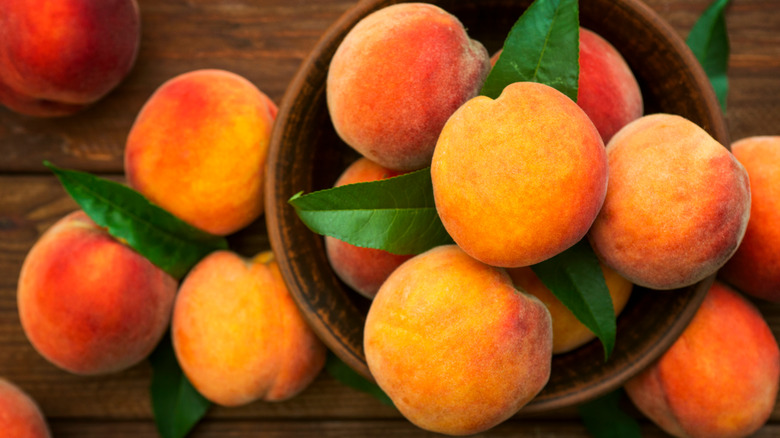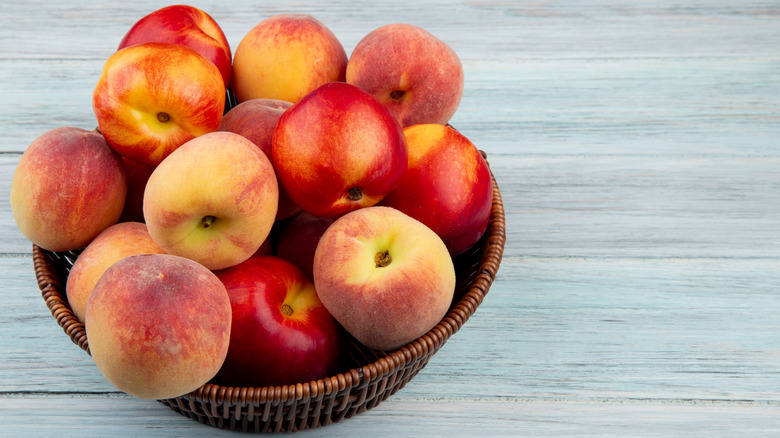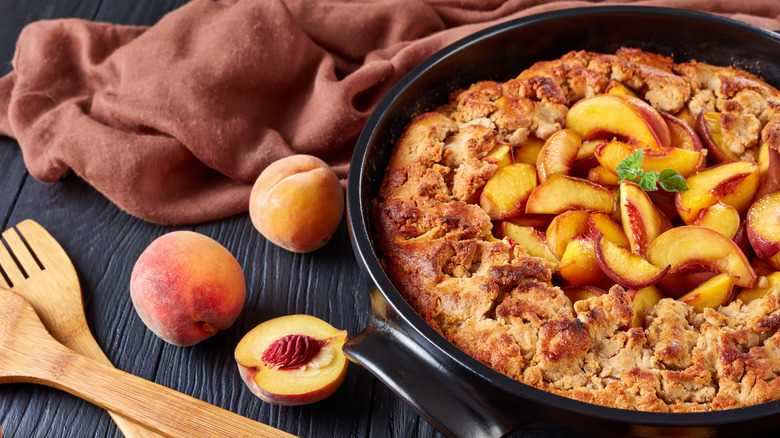The Real Difference Between Nectarines And Peaches
Peach season, and that feeling of their juice dripping down your cheeks and hands, are both congruent with summertime. Whether they're sliced and eaten fresh or baked into a peach crisp, these fruits bring a sweet and sunny element to any dish. The adorably fleshy and fuzzy pinkish-yellow fruits are found inside stores and at farmers' markets all season long, and they're usually accompanied by their near relatives: nectarines.
At first glance, peaches and nectarines can be easy to mix up — and you often may not know until you physically touch one. The two are equally sweet (via Healthline) and come in the same gorgeous shades that are reminiscent of warm summer sunsets. If it weren't for the distinctively smooth skin of nectarines, you might not even know the difference. But despite their similarities, there are a few key differences between them that, depending on the recipe, make one better than the other.
Peach or nectarine: what's the difference?
According to Healthline, peaches and nectarines are both stone fruits, a category of fruits that are identified by their large pits. Each can be broken down into three different types: clingstone, freestone, and semi-freestones, which indicate how easy it is to separate the pit from the flesh of the fruit. However, nectarines are a distinct type of peach — one with a genetic mutation that causes them to forego the cute, fuzzy skin the fruits are known for.
The most obvious difference between peaches and nectarines is the texture of their skin. Rather than being soft and fuzzy, nectarines are smooth and slightly more firm. In terms of size, nectarines tend to be smaller than most peaches. The use of "nectar" in their name suggests that they may be sweeter than peaches; however, the sugar content of each depends on ripeness and color, as both have yellow or white varieties (with white being sweeter). Other than that, these two fruits are almost genetically and nutritionally the same.
When to use each
Due to their similarities, peaches and nectarines can be substituted and interchanged in almost any recipe. However, there are a few instances where one may be better than the other.
Traditionally, peaches are used in pies and cobblers — but there's no reason you can't substitute them for nectarines. In fact, because nectarines are slightly more firm, they'll hold their shape better (via Ask The Food Geek). For this same reason, nectarines are better suited for grilling and in any recipe that asks you to peel your peaches. In recipes like salsas, tarts, and sauces, using nectarines could actually save you time because their thin, smooth skin doesn't need to be peeled at all. And, according to the National Center for Home Food Preservation, nectarines are just as good for canning as peaches.
However, the softer texture of peaches is sometimes preferred and is why they're so loved in pies and other baking recipes (via Healthline). So when creating recipes with a soft texture (such as this peach butter), it really just comes down to which fruit is available to you and what you like best.


